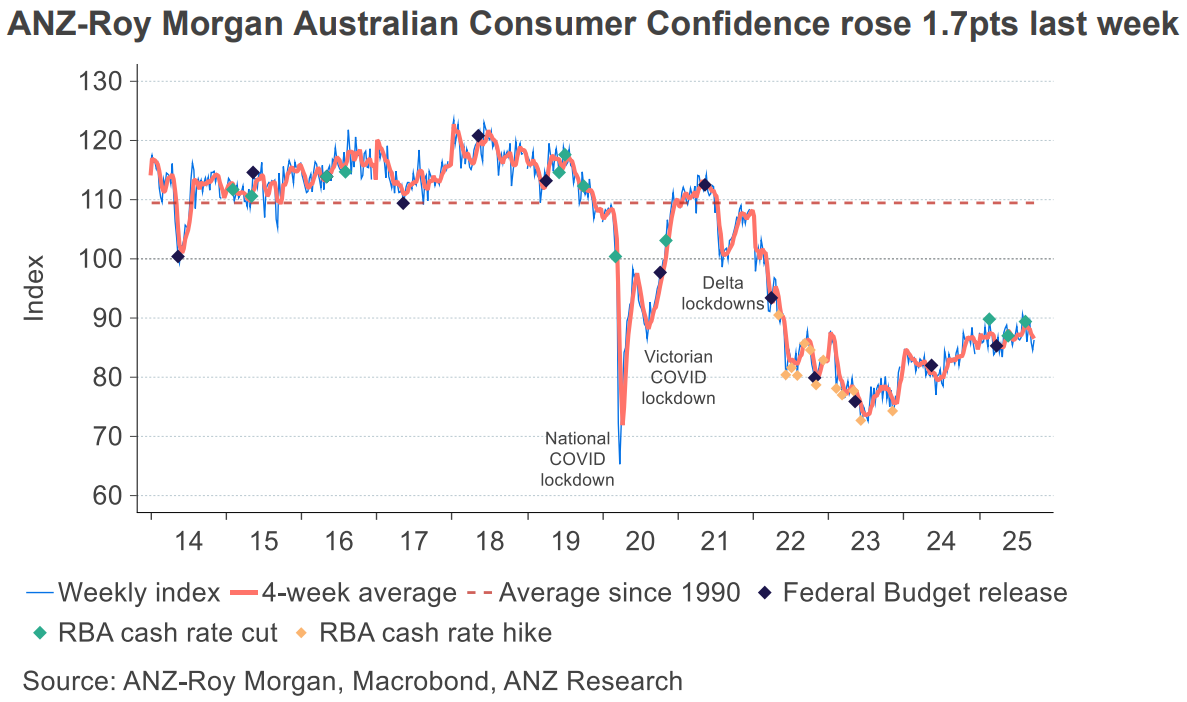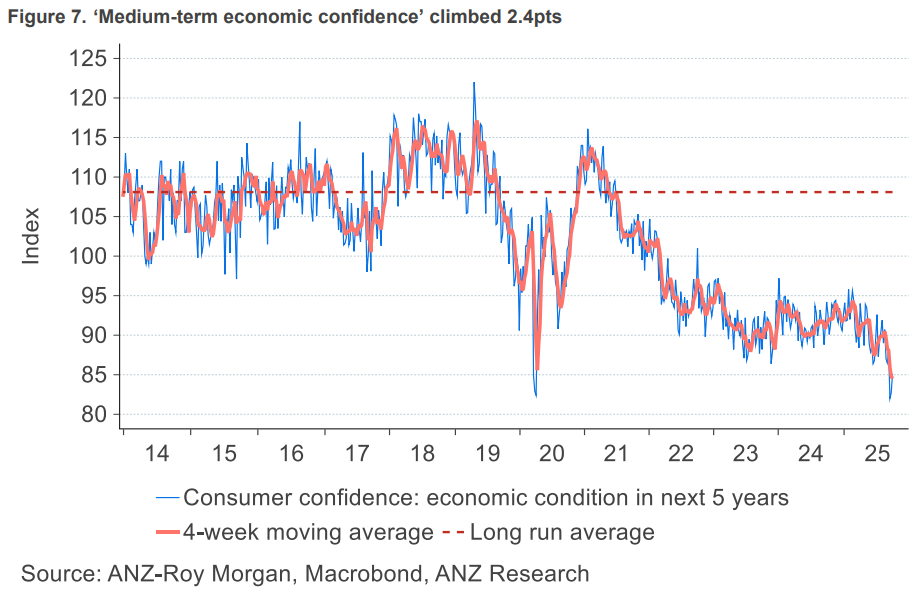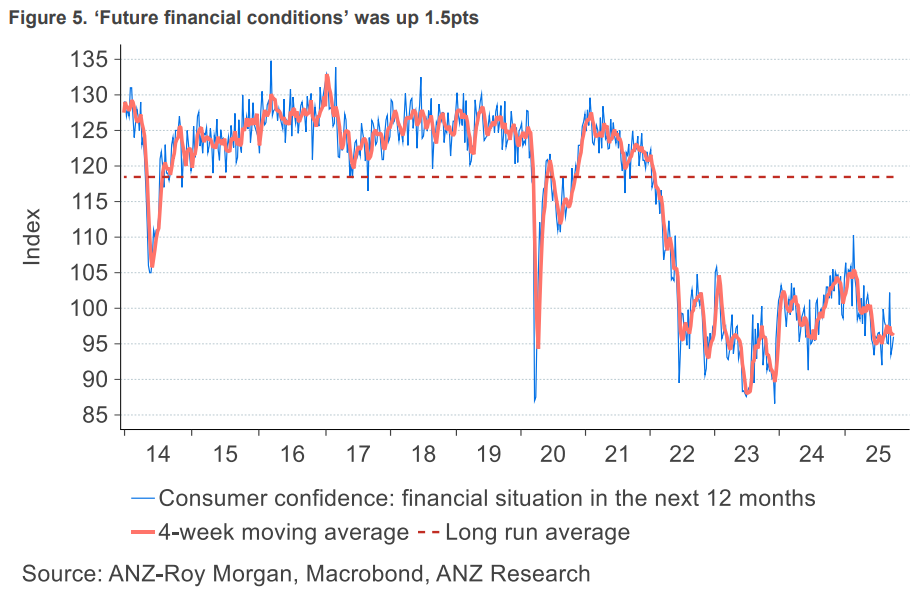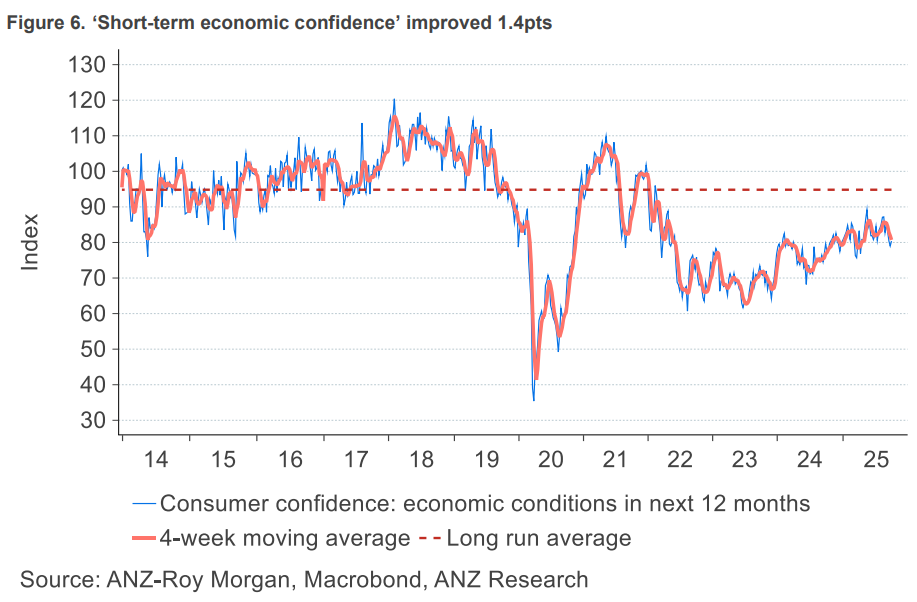Upon the arrival of the pandemic in Australia in early 2020, the consumer confidence of the nation’s households experienced a sharp decline and has remained turbulent.
By mid-2021, consumer confidence within ANZ-Roy Morgan index had returned to pre-Covid levels.
Then, with the 2021 round of lockdowns and pandemic-driven restrictions, it began to tumble again.

While confidence levels would ebb and flow over time, it would continue to trend down until finally bottoming out in mid-2023.
In the more than two years since, it has recovered significantly from where it was. However, it remains deeply depressed below pre-Covid levels and has appeared to be somewhat range-bound since the latter months of 2024 on a rolling 4-week average basis.
But when you start to drill down into the various components of the index, a major divergence emerges, with one forward-looking indicator revealing a weaker outlook today than during the height of the pandemic panic in early 2020.
The Bad News
One of the components of the ANZ-Roy Morgan index asks Australians how they view conditions for the economy over the next 5 years.
This weekly read on this metric recently hit an all-time low, with the 4-week moving average also hitting an all-time low this week.

This reflects polling from Resolve indicating that the vast majority of Australians see their economic fortunes either staying the same or getting worse.
While nowhere near as depressed as the long-term economic outlook, the perspective of the nation’s households on their personal financial circumstances remains near levels seen during the height of the pandemic panic.

The Better News
While the news from some of the other indicators is better, one wouldn’t go so far as to call it good.
In terms of the outlook for the economy over the next 12 months, confidence remains below immediately pre-Covid levels but is performing significantly better than most of the other sub-indexes.

This presents a rather interesting divergence, with households taking a much more negative view of their own outlook than historically, while the view of economic conditions more broadly is far closer to pre-Covid norms.
One can only speculate the reasons as to why, but it could be partially attributed to the expectation of rate cuts improving the broader economic outlook, although not necessarily those of the individual household perceiving that expected improvement.
The Takeaway
While overall confidence levels remain depressed compared with pre-pandemic norms, there is a concerning perception of medium- to long-term economic decline increasingly showing up in the data.
Given what households have experienced in recent years, this is understandable; many increasingly see the economy going nowhere from their perspective, while costs continue to rise.
Going forward, the economy is being supported by the perception that things will improve, possibly on the back of rate cuts, with some role potentially being played by the honeymoon period of a relatively newly elected federal government.
If that expected future does not materialise, there is a risk that the labour market may deteriorate by significantly more than expected, potentially driving a feedback loop of even lower levels of confidence and growth in economic activity.

